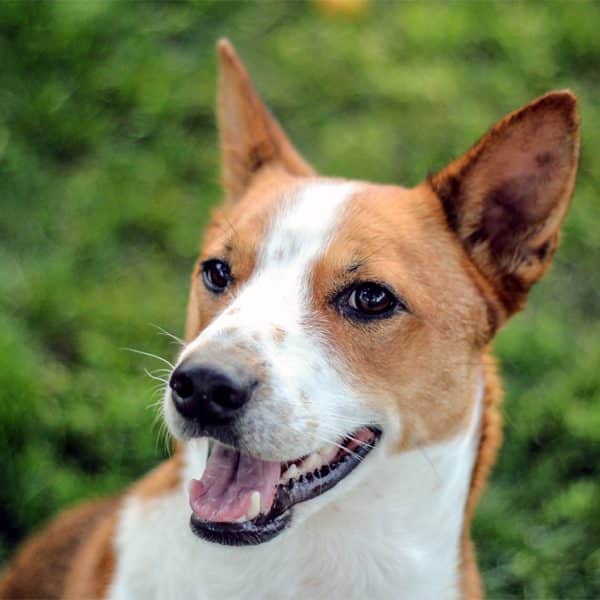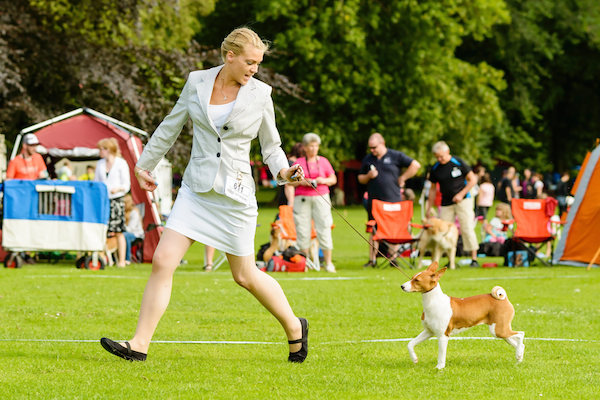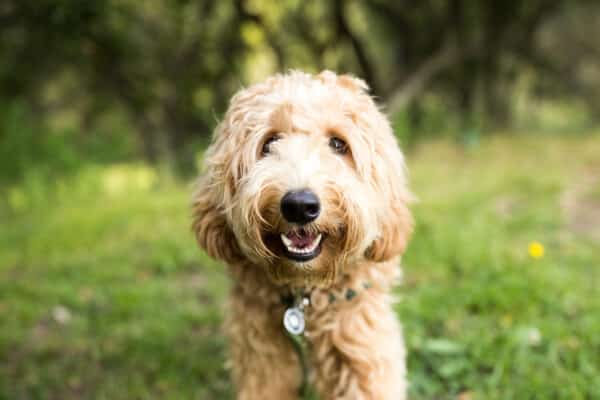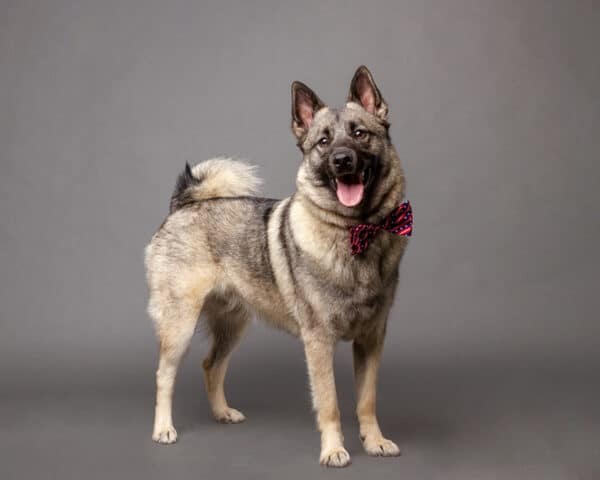Quick Facts
- Weight: 21 – 24 pounds (9.53 – 10.89 kg)
- Height: 16 – 17 inches (40.64 – 43.18 cm)
The Look of a Basenji
Basenjis are small, pointy-eared dogs that are covered in smooth, shiny coats that can come in red, black, red & black, black & red, and black & brindle. Their alert heads have tapered muzzles, almond-shaped eyes, dark noses, and wrinkled foreheads that sometimes give them a worried look. They have long necks that slope down to short backs. Their tails curl over, and they walk with a kind of horse-like trot. Overall, Basenjis carry themselves with gracefulness and readiness.

Traits
- Inquisitive
- Active
- Loyal
- Reserved
- Athletic
Ideal Human Companion
- Families with older children
- Hunters and sportsmen
- Experienced dog handlers
What They Are Like to Live With
Basenjis may have an illustrious hunting pedigree, but they can get very comfortable at home. In fact, Basenjis will sometimes sleep the day away. When they wake up, however, watch out: These dogs love to play, explore and run. Even if you’re not in the mood to play, your Basenji will find a way to coax you out of your chair. Their intelligence and craftiness is second to none.
Basenjis don’t bark—a plus for some dog owners—but keep in mind that they do make some very interesting sounds. Depending on their mood, they will howl, scream or yodel. Basenjis also make human-like facial expressions—furrowing their brows when they sense danger or raising their eyebrows when they get worried.
Taking into account that their ancestors basically lived in the bush hunting and tracking, Basenjis are a mix of cleverness, resourcefulness and independence. They know how to take care of themselves, but they also love human companionship and togetherness. Basenjis form very strong bonds with their masters and, when properly introduced, are very playful with children.
Things You Should Know
Don’t be fooled by their lone-wolf nature: Basenjis are people-oriented dogs. If neglected or excluded from family occasions, they can get depressed. Sometimes this can lead to destructiveness. If left alone in the back yard for hours on end, a Basenji can easily dig up a garden or figure out a way to jump the fence.
Basenjis need lots of exercise to stay mentally and physically fit. Several walks a day will suit them. They also make superb jogging partners. But always remember to keep them on a leash.
A healthy Basenji can live as long as 12 years. Common health issues include Fanconi Syndrome (a kidney ailment), in addition to hip, eye and intestinal problems. Basenjis are clean animals. Like cats, they often groom themselves by licking their fur. A good brushing every few days will be good for them, but they shed very little.
Basenji History
The Basenji is an ancient breed, dating back to the time of the pharaohs. Used in central Africa for thousands of years, Basenjis were valued for their quickness, intelligence and silence by African hunters who used them for a host of duties—retrieving, pointing, tracking and herding. The first Basenjis taken to Europe in the 19th century did not survive. However, in 1937 these unique dogs were introduced in England and America, drawing huge crowds and causing a sensation.





